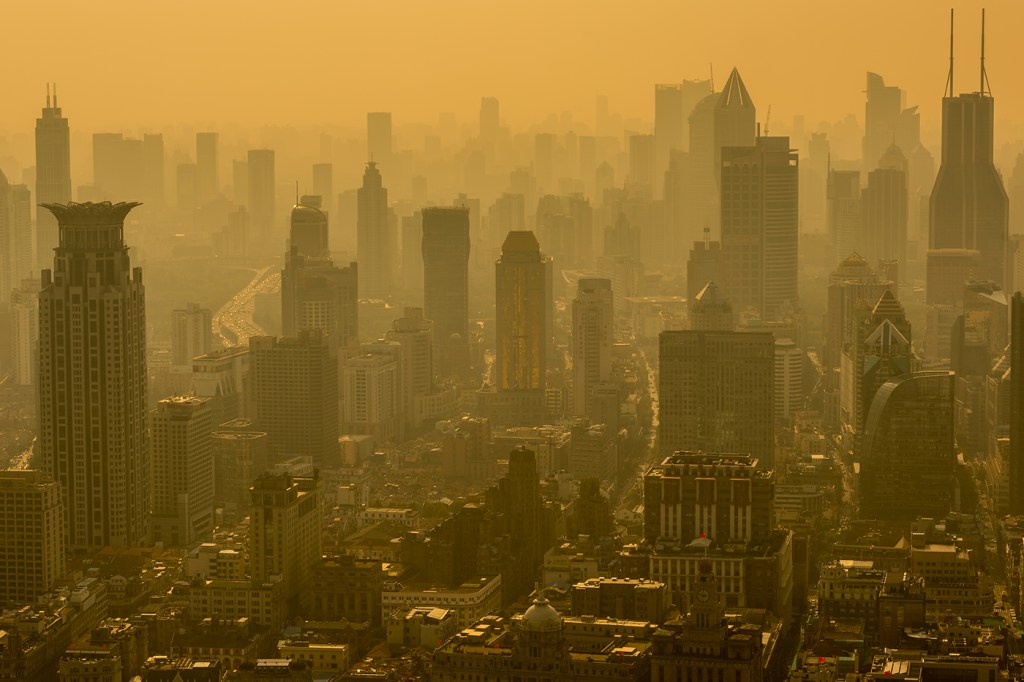Hot take: Heat waves scorch unsuspecting cities

Every summer, residents of the desert Southwest brace for extreme heat. But this year, heat waves have impacted areas from Seattle to Slovenia that are unaccustomed to dealing with uncommonly high temperatures.

Low-income populations are most vulnerable to heat waves, said professor Sharon Harlan, a heat justice expert. Photo by Matthew Modoono/Northeastern University.
The Pacific Northwest has seen record-breaking heat waves for the past three years. This creates a sticky—and dangerous—situation for the area, since many
homes don’t have air conditioning. Cities all over Europe have been sweating over “Lucifer,” a heat wave that caused at least two deaths and stoked forest fires. And the trend isn’t cooling off anytime soon.
“Heat waves are projected to become more intense, more frequent, and longer lasting over the next century,” said heat justice expert Sharon Harlan, professor of health sciences and sociology at Northeastern. Here, Harlan discusses the dangers of heat waves and how they disproportionately affect low-income populations.
What is the scientific definition of a heat wave?
There are many definitions of heat waves, but most involve a comparison of present day temperatures to normal historical temperature variability over recent decades. One easily comprehensible definition counts multiple consecutive days on which maximum temperatures exceed the 95th percentile of normal temperatures. The National Weather Service issues extreme heat warnings to the public using criteria that vary from place to place and forecasters’ experience with local meteorological conditions and judgment.
What are the biggest health concerns related to heat waves?
Heat waves often cause a public health crisis because extreme temperatures have both direct and indirect effects on human health. Countless studies show that heat wave periods are associated with elevated emergency room visits, hospital admissions, and deaths that occur immediately and within several days after the event. The most visible consequence is heat stress that ranges from mild discomfort to death from heat stroke. Heat affects the functioning of organ systems, such as the heart, lungs, and kidneys, which can result in elevated numbers of people experiencing congestive heart failure, stroke, respiratory illnesses, and renal failure. Heat-related health studies routinely find that advanced age and chronic illnesses, such as diabetes, are contributing factors to heat mortality.
What are the biggest social justice concerns associated with heat waves? What populations are most vulnerable?
Poverty is a key socioeconomic indicator of vulnerability to heat in populations around the world. In the United States, there is also a strong case for the independent effect of race on vulnerability to extreme weather events—including heat-related mortality—and the longer-term effects of climate change. In large part, this is because low-income people and minorities are more likely to be living on the streets or in hotter neighborhoods, have poor housing quality, work in outdoor jobs, have fewer economic and social resources at their disposal, and use public transportation rather than private vehicles. My team’s research in Phoenix shows that in the summer, outdoor temperatures in low-income, minority neighborhoods are significantly hotter, on average, than higher-income neighborhoods. This is due in part to a lack of green spaces in lower-income neighborhoods. Nationally, access to air-conditioned indoor environments is one of the biggest protective factors against heat deaths. However, nationwide the cost of electricity, expensive equipment, broken units, and the cost of repairs prevent lower-income people from using air conditioners to cool indoor temperatures in their homes.
Are there historical examples of heat waves causing harm?
Yes. Heat is often called the silent killer because it doesn’t leave destruction behind, like a flood or hurricane. Heat deaths in the U.S. were very common prior to the invention and public acceptance of air conditioning. Exceptional heat waves around the world have caused hundreds to tens of thousands of excess deaths over periods of time ranging from days to weeks. More than 700 deaths were attributed to the five-day 1995 Chicago heat wave, in which most of the victims were poor, elderly residents. The 2003 European heat wave claimed between 52,000 and 70,000 lives, depending on the source. A 2010 heat wave, combined with poor air quality caused by forest fires in Russia, left 11,000 dead in Moscow. Though news coverage of heat in India is sparse, that country may suffer worst of all—one study showed that between 1978 and 1999, there were 225 heat waves and uncounted dead.
If we are to expect more frequent and intense heat waves in the future, what precautions should cities take to protect people?
Cities of the future will have to find ways to adapt to a much warmer climate if they want to remain places where people can survive and enjoy living. The public health sector in the U.S., Europe, and Australia has already embarked on ambitious pathways to reduce heat deaths in vulnerable populations through better surveillance, more public outreach, improved emergency response, the creation of public “cooling centers,” and extended services to the elderly and ill. City planning and development should focus on investments in the city’s infrastructure to mitigate the urban heat island effect by adding public green and blue public spaces, using water efficiently for outdoor cooling, harnessing the power of smart building design, and reducing dependence on fossil fuel energy for indoor cooling. Infrastructure investments should be targeted to low-income communities first, not last.





